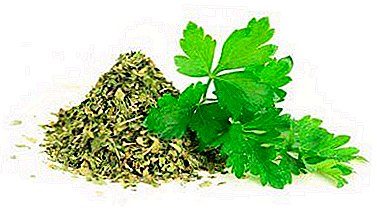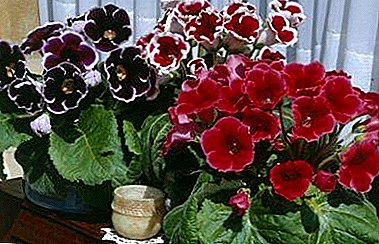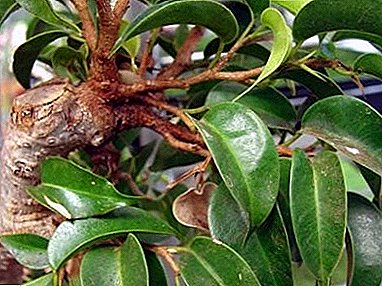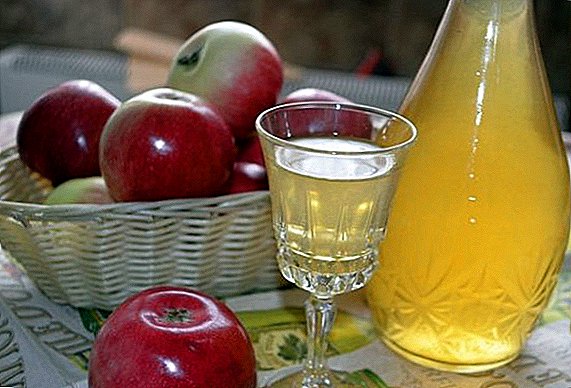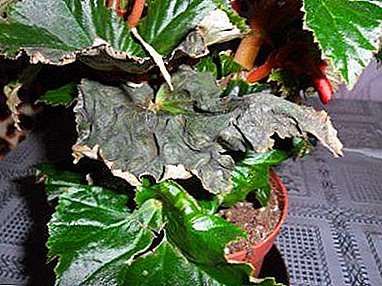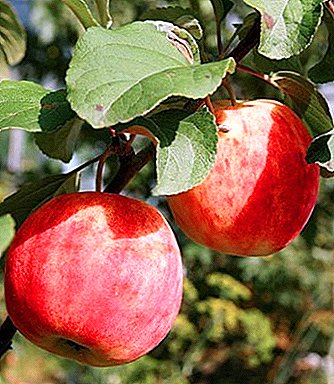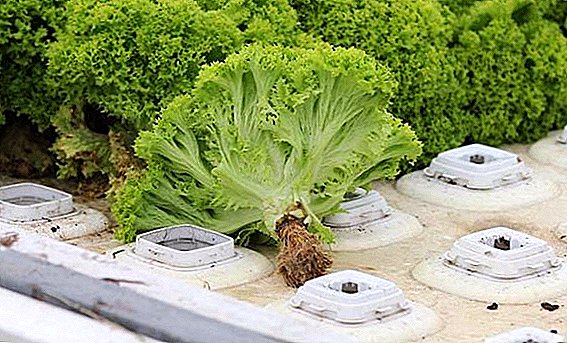 A rare hostess did not dream of having fresh greens always at hand. And if indoor flowers - a familiar phenomenon, the dill and lettuce on the windowsill is not so often found in an ordinary apartment. Nevertheless, there are technologies that allow you to easily grow not only beautiful, but also useful plants. In this article we will talk about hydroponics - a method of growing greens at home.
A rare hostess did not dream of having fresh greens always at hand. And if indoor flowers - a familiar phenomenon, the dill and lettuce on the windowsill is not so often found in an ordinary apartment. Nevertheless, there are technologies that allow you to easily grow not only beautiful, but also useful plants. In this article we will talk about hydroponics - a method of growing greens at home.
Fresh greens any time of the year
Hydroponics is an old, though not very well-known, groundless method of growing plants. The name itself speaks about the specifics of the method: translated from Greek, it means "working solution".
Did you know? One of the seven wonders, the famous Hanging Gardens of Babylon - the first known application of hydroponics.When grown hydroponically, the roots of the plant are in a homogeneous solid substrate of organic or artificial origin. All the nutrients green scoops out of solution, where the container is immersed with the substrate. For each type of plant there is a separate solution with the necessary set of batteries.
What you need for growing greens
To grow dill and other plants hydroponically, it is necessary to prepare all the components of technology. It consists of two elements.
Familiarize yourself with the nuances of growing cucumbers, tomatoes, strawberries using hydroponics.
Installation
Hydroponic installation includes containers for planting and supply system nutrient solution. There are many types of such installations, adapted for industrial or individual use.  Equipment for hydroponic cultivation can be bought or assembled by hand. If it is decided to make the construction independently, you will need a double container (two separate tanks can replace it), a water tank, a pipe, an aquarium pump and a timer that will control the entire working system. These details will be enough to establish the cultivation of greenery on the balcony; still need to maintain optimum temperature and lighting.
Equipment for hydroponic cultivation can be bought or assembled by hand. If it is decided to make the construction independently, you will need a double container (two separate tanks can replace it), a water tank, a pipe, an aquarium pump and a timer that will control the entire working system. These details will be enough to establish the cultivation of greenery on the balcony; still need to maintain optimum temperature and lighting.
Did you know? The development of the idea of hydroponics was aeroponics, where the roots of plants are in the air and from time to time they are pollinated by the substrate. Directly water to the roots is not supplied.If there is no desire or opportunity to assemble a hydroponic plant for growing greens personally, you can buy it by ordering via the Internet. The principle of operation of the factory systems is the same, except that the purchase will look more compact and easier to use.

Solution and Substrate
When the growing plant is ready, it remains to take care of the solution and substrate. The substrate that fills the pots with plants serves to support the roots. He himself is absolutely sterile, that is, does not contain any nutrients. It is important that the substrate is not exposed to moisture and chemicals dissolved in water.  The solution is usually bought in gardening stores. This is a prepared fluid that contains all the necessary trace elements for the growth and development of a certain type of greenery. Since each plant requires an individual nutrient medium, the composition of the solution for different species will vary.
The solution is usually bought in gardening stores. This is a prepared fluid that contains all the necessary trace elements for the growth and development of a certain type of greenery. Since each plant requires an individual nutrient medium, the composition of the solution for different species will vary.
Preparing for landing
Before landing it is necessary to determine the place where the hydroponic installation will be located. As a rule, it is a window sill or a balcony. In addition to food (which is provided by the system), the plants need sufficient lighting and a constant, comfortable temperature for growth. These factors need to be considered.
Substrate selection
As mentioned above, the substrates are divided into organic and artificial. The main property of any of them - resistance to the constant influence of water and chemical elements. They also should not release any substances, as the plant nutrient is strictly calculated in advance. Here are some of the most common substrates:
- expanded clay - These are pieces of clay, caked under the influence of a temperature of 1200 ° C. There are no minerals in it, but expanded clay can lower the pH of the solution. This type of substrate is suitable for reusable use, you just need to rinse it from the remnants of the solution and clean the roots. Before first use, claydite is also washed under running water to avoid impurities;
- mineral wool - one of the cheapest and effective substrates for hydroponics. However, it has its drawbacks. Working with mineral wool requires caution, as it contains microparticles that irritate the skin. It is necessary to be afraid of hit of this substance in eyes and airways. It is also a biodegradable substrate, and proper disposal of mineral wool can cause difficulties;
- coconut substrate. In its composition - coir and ground coconut shell, so it is completely safe for the environment. After use it can even be poured into beds as fertilizer. As a support for plants in hydroponics, it is considered one of the best, because it can accumulate minerals and nourish them for a long time. It also retains water well and gives oxygen access to the roots;
- vermiculite and perlite. These two substrates are recommended to be used together, as they have complementary properties. Vermiculite makes the composition of the soil loose and absorbs a lot of water. Perlite complements it, this substrate of volcanic origin also perfectly retains moisture and does not interact with chemical fertilizers.




Important! The substrate should conduct well not only water, but also air. Breath is necessary for roots for vital functions.
Planting seeds
As a rule, hydroponics requires the initial germination of seeds. Seeds are germinated in soil or its analog (for example, in peat), watering in advance with prepared solution. When a seedling has one or two true leaves, it means that the root system is already quite developed. This plant will transfer planting in a filler without loss.  For transplantation, the grown seedling is removed from the pot along with the ground and the roots are gently washed. Then, holding the plant, fall asleep straightened root system substrate.
For transplantation, the grown seedling is removed from the pot along with the ground and the roots are gently washed. Then, holding the plant, fall asleep straightened root system substrate.  It is necessary to plant to such a depth that in the future the roots do not touch the solution - moisture and nutrients will rise up through the pores of the filler in sufficient quantity.
It is necessary to plant to such a depth that in the future the roots do not touch the solution - moisture and nutrients will rise up through the pores of the filler in sufficient quantity. 
Important! Immediately after transplantation, plain water is poured into the solution tank. Only a week later it is replaced with a solution when the plant adapts.Some modern hydroponic systems make it possible to dispense with a transplant and sow the seeds immediately into the plant. But such opportunities are not offered by all equipment manufacturers.
Preparation of the solution
The solution is prepared according to the manufacturer's recommendations, observing the exact dosage. For growing lettuce and other herbs in hydroponics at home, they take a concentration of 1.25 above the average. The solution consists of a complex fertilizer and calcium nitrate. For accurate dosing of fertilizer, you can use a medical syringe. The required amount is diluted in 1 liter of water. Calcium nitrate is diluted in a concentration of 25% for soft water (250 g of substance per 1 l of water). These are the two basic elements for a conventional solution.
Learn the secrets of growing sage, savory, rosemary, basil, cilantro, chervil, green onions, parsley, arugula on the windowsill.
Peculiarities of care for greens in hydroponics
The main difficulties and concerns of the owners of hydroponic systems are to maintain the external conditions for growth. In addition, the installation itself requires care.  Here are the basic requirements:
Here are the basic requirements:
- The nutrient solution should be completely replaced every three months. This will help to avoid changes in the concentration of mineral substances under the influence of external factors;
- Do not allow foreign objects to enter the solution. This also applies to dead plant parts - they need to be cleaned in a timely manner;
- the optimum water temperature should be maintained (20 ° C). If the installation is on a cold windowsill, it is recommended to build a stand or a tray for it.
Hydroponics is a reliable method of growing greens at home, not requiring a lot of effort and has proven itself among amateur gardeners.


